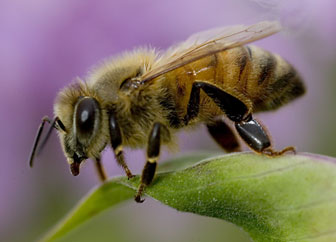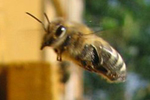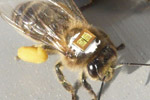A campaign launched on Change.org is calling on the EPA to ban chemicals known as neoniconitoids after two prominent studes linked the pesticide to mass Colony Collapse Disorder among bees.
The petition drive, which already has 118,000 signatures, was launched this week by Susan Mariner, a backyard gardener from Virginia.
“This new study is even more evidence the Environmental Protection Agency needs to take Bayer’s neoniconitoids off the market,” Mariner said. “We have more than enough information to act, and more than 100,000 people across the country are looking to the EPA to keep our bees, and the crops they pollinate, safe. At this point, there is no excuse for inaction.”
Bee populations have been dying mysteriously throughout North America and Europe since 2006, but the cause behind the decline, has eluded scientists. However research published last week in Science linked bee declines to neonicotinoid pesticides, including imidacloprid. Past research has shown that neonicotinoid pesticides, which target insects’ central nervous system, do not instantly kill bees. However, to test the effect of even small amounts of these pesticides on western honeybees, Harvard researchers treated 16 hives with different levels of imidacloprid, leaving four hives untreated. After 12 weeks, the bees in all twenty hives—treated and untreated—were alive, though those treated with the highest does of imidacloprid appeared weaker. But by 23 weeks everything had changed: 15 out of the 16 hives (94 percent) treated with imidacloprid underwent classic Colony Collapse Disorder: hives were largely empty with only a few young bees surviving. The adults had simply vanished. The hives that received the highest doses of imidacloprid collapsed first. Meanwhile the five untreated hives were healthy.
 A honeybee settles onto a wildflower at Fermilab. Image courtesy of the Fermi National Accelerator Laboratory |
“There is no question that neonicotinoids put a huge stress on the survival of honey bees in the environment,” lead author Chensheng (Alex) Lu, an associate professor at the HSPH, told mongabay.com. “The evidence is clear that imidacloprid is likely the culprit for Colony Collapse Disorder via a very unique mechanism that has not been reported until our study,”
That mechanism? High-fructose corn syrup. Many bee-keepers have turned to high-fructose corn syrup to feed their bees, which the researchers say did not imperil bees until U.S. corn began to be sprayed with imidacloprid in 2004-2005. A year later was the first outbreak of Colony Collapse Disorder.
Bees play vital roles in a wide-variety of ecosystems as pollinators. In turn they provide massive economic benefits to human society, both through the production of honey and, even more importantly, the pollination of a large variety of fruits, vegetables, nuts, and flower crops. The economic value of honeybees in the U.S. alone has been estimated at $8-12 billion.
EPA: Save Our Bees and the Food We Eat! Ban Bayer’s Chemicals Now!
Related articles

Researchers recreate bee collapse with pesticide-laced corn syrup
(04/05/2012) Scientists with the Harvard School of Public Health (HSPH) have re-created the mysterious Colony Collapse Disorder in several honeybee hives simply by giving them small doses of a popular pesticide, imidacloprid. Bee populations have been dying mysteriously throughout North America and Europe since 2006, but the cause behind the decline, known as Colony Collapse Disorder, has eluded scientists. However, coming on the heels of two studies published last week in Science that linked bee declines to neonicotinoid pesticides, of which imidacloprid is one, the new study adds more evidence that the major player behind Colony Collapse Disorder is not disease, or mites, but pesticides that began to be widely used in the 1990s.
Smoking gun for bee collapse? popular pesticides

(03/29/2012) Commonly used pesticides may be a primary driver of the collapsing bee populations, finds two new studies in Science. The studies, one focused on honeybees and the other on bumblebees, found that even small doses of these pesticides, which target insect’s central nervous system, impact bee behavior and, ultimately, their survival. The studies may have far-reaching repercussions for the regulation of agricultural chemicals, known as neonicotinoid insecticides, that have been in use since the 1990s.
The value of the little guy, an interview with Tyler Prize-winning entomologist May Berenbaum

(04/06/2011) May Berenbaum knows a thing or two about insects: in recognition of her lifelong work on the interactions between insects and plants, she has had a character on The X-Files named after her, received the Public Understanding of Science and Technology Award for her work in making science accessible to the public, and this year has been awarded the prestigious Tyler Environmental Prize. “Winning the Tyler Prize is an incredible honor—most of my scientific heroes have been Tyler Prize winners and I’m exceedingly grateful to be considered worthy of being included among their ranks,” Berenbaum told mongabay.com in an interview. “The Prize is also tremendously enabling—because the money is unrestricted I can use it to carry out projects that have been difficult to fund.”